I do hope you all had a good week. I have had a busy week of consultations as well as preparing for two upcoming speaking engagements, (which I love to do by the way). But the most exciting thing is that I am working on getting ready for a trip along the east coast – I can’t wait to tell you more about that 🙂
I have enjoyed this series of ‘Curing the Garden Blahs’ and would like to cover the topic of form and texture since they belong together along with color, which we covered in an earlier post.
You may not be too familiar with these concepts and wonder what part they play in a good garden design. To help, let my ask you the following question – have you seen a landscape that really catches your interest, but you cannot tell exactly why? Landscapes full of flowering plants do attract our attention, but have you ever been attracted to one that does not necessarily have lots of flowering plants? If so, chances are that the designer made sure to incorporate both texture and form when they created the garden.
Well, let’s get familiar with texture first. Texture refers to the visual surface of a plant, such as rough or smooth as well as the size and shape of foliage, flowers, branches and bark. Here in the desert, we definitely have our share of plants with rough surfaces, but no matter where you live the following photos should help you understand the concepts of texture and how it relates to your landscape plants.
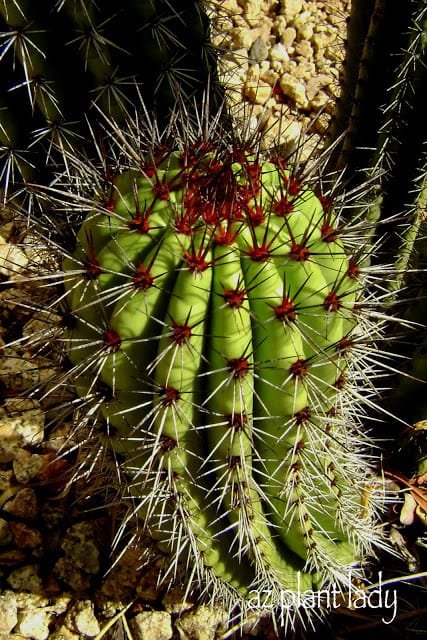
Ouch!
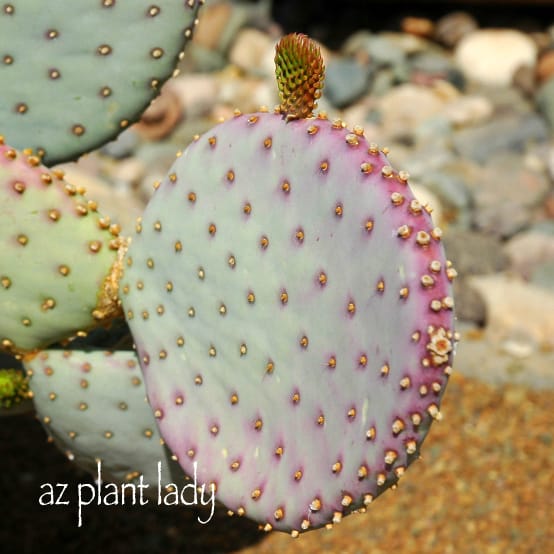
Curing the Garden Blahs;Purple Prickly Pear
In direct contrast are those plants with smooth surfaces…..
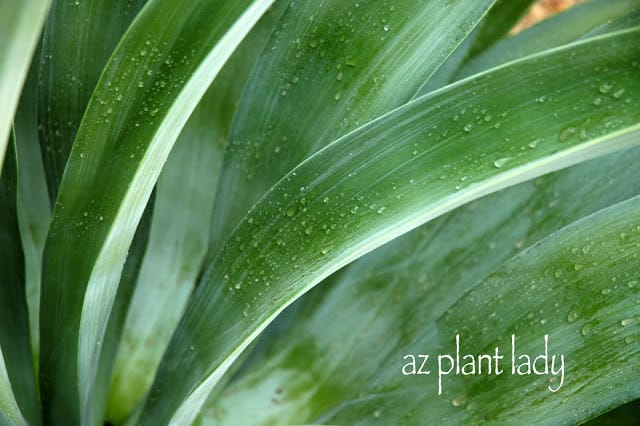
Agave desmettiana
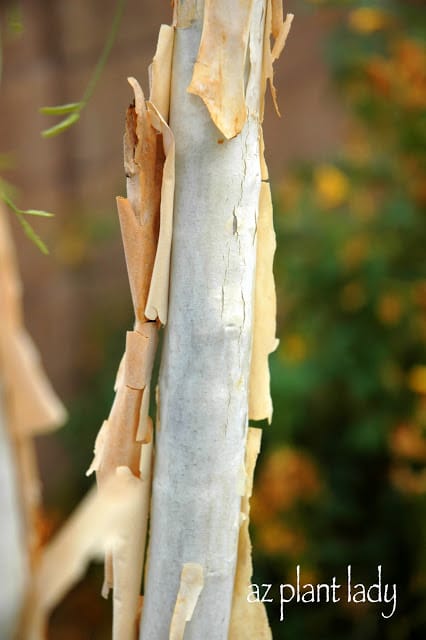
Palo Blanco (Acacia willardiana)
Different types of texture are also expressed in the different shapes of foliage and bark.
First, examples of fine textured plants which are characterized by small leaves and flowers and sometimes have a ‘lacy’ appearance.
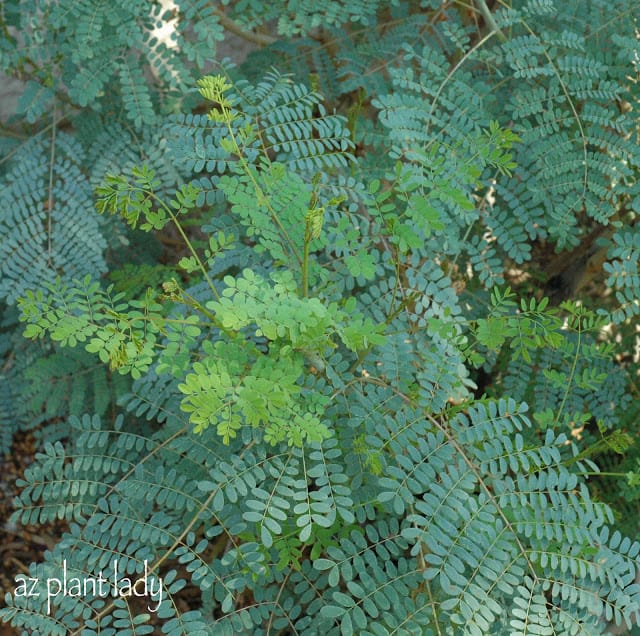
Red Bird-of-Paradise (Caesalpinia pulcherrima)

Black Dalea (Dalea frutescens)
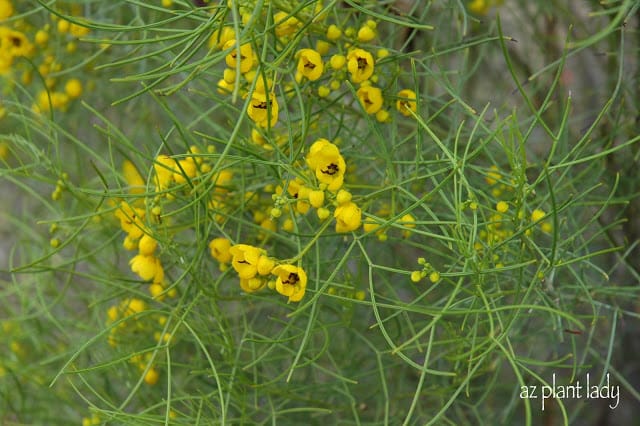
Threadleaf Cassia (Senna nemophila)
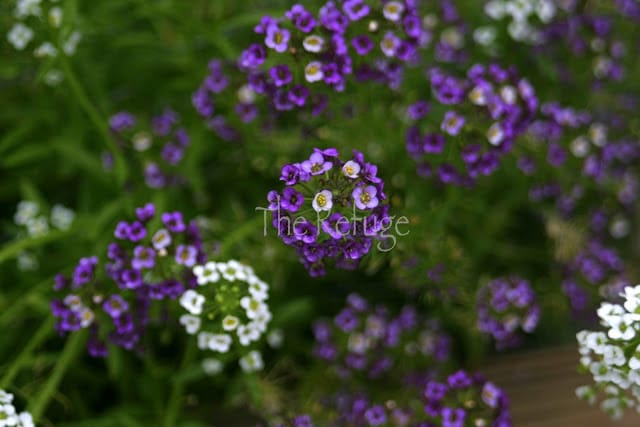
Curing the Garden Blahs ;Alyssum ‘Royal Carpet’
Here are some examples of plants that have a coarse texture which is characterized by large leaves that tend to be bold and make a statement in the landscape.
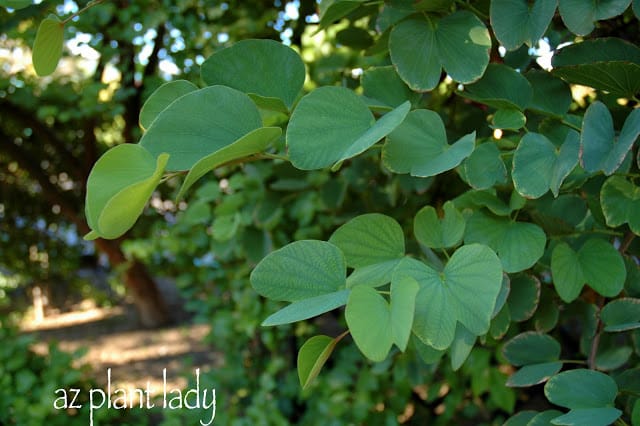
Purple Orchid Tree (Bauhinia variegata)
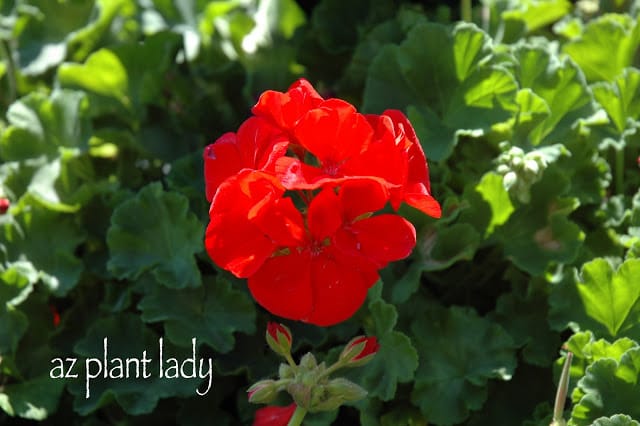
Geranium
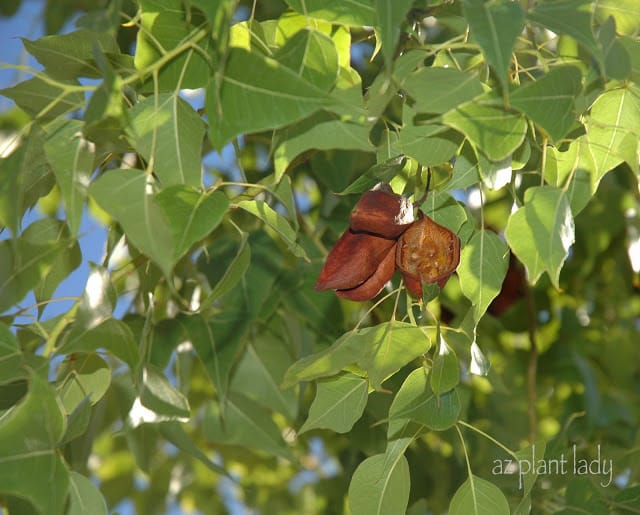
Australian Bottle Tree (Brachyiton populneus)
One way that designers draw attention the landscape is to pair different textures together. The following picture is an excellent example of this…..
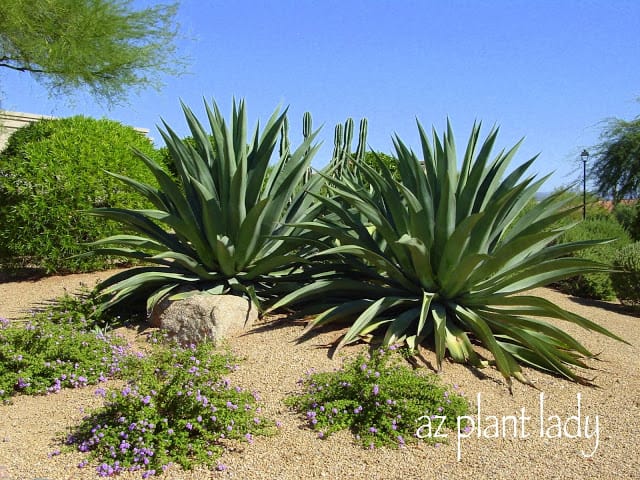
Agave weberi with Purple Trailing Lantana
The coarse texture of the Agave paired with the fine texture of the Purple Trailing Lantana accentuate their differences and your eye is drawn to that naturally. When emphasizing the ways that they are different, you also appreciate their individual beauty even more. If you place plants with similar texture next to each other, they can fade into the background.
In general, coarse textured plants are placed in the background while the finer textured plants are in the front.
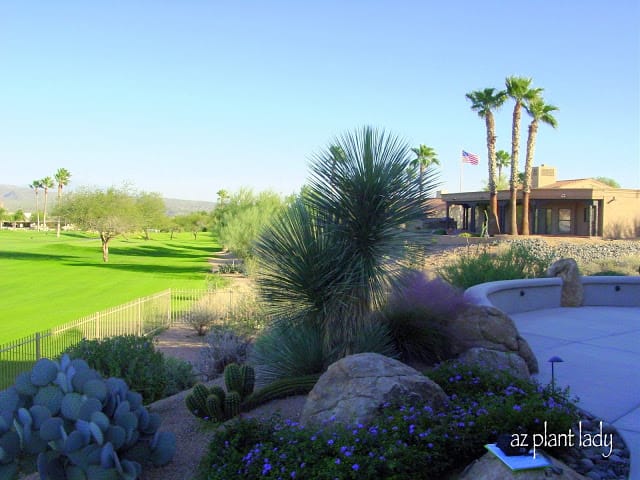
A variety of textures are represented in this backyard garden, which draws your attention.
Now let us look closer at the concept of form as it relates to the garden. This is somewhat easier to grasp as it has to do with the overall shape of plants.
Here are spiky plants, often called ‘accent’ plants….
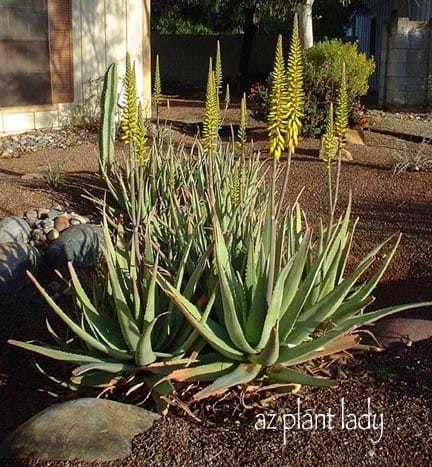
Aloe Vera (Aloe barbadensis)
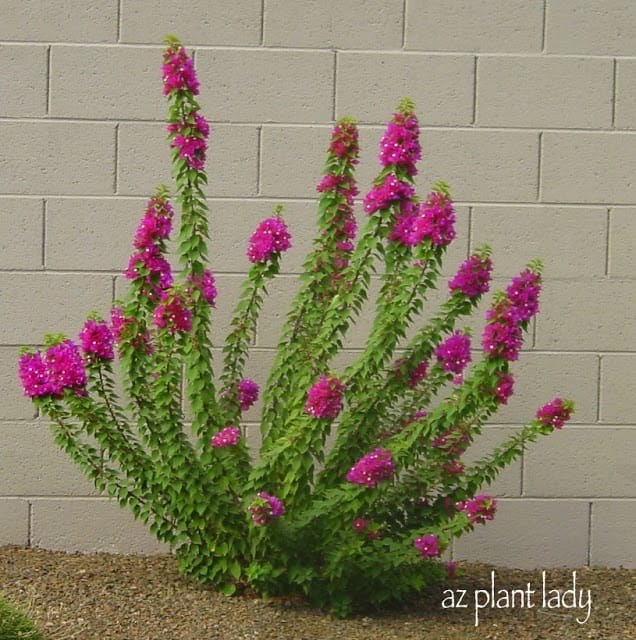
Bougainvillea ‘Torch Glow’
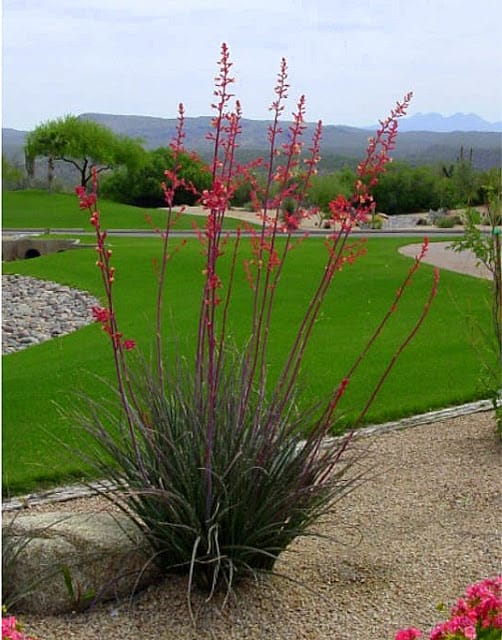
Red Yucca (Hesperaloe parviflora)
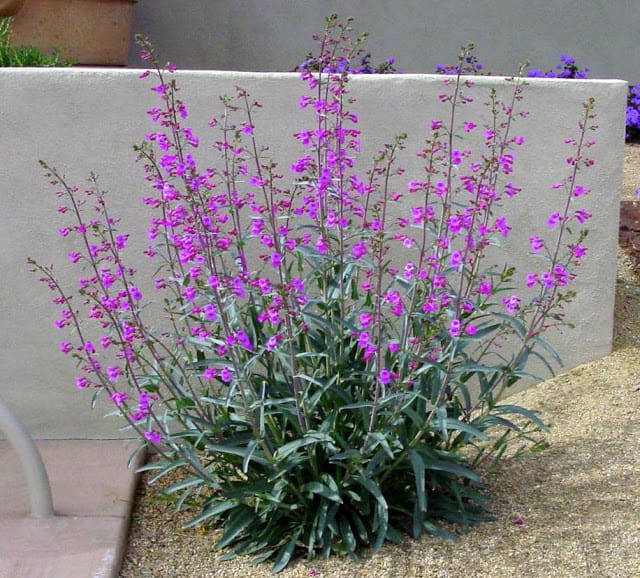
Parry’s Penstemon (Penstemon parryi)
Other plant shapes are more naturally more rounded…..
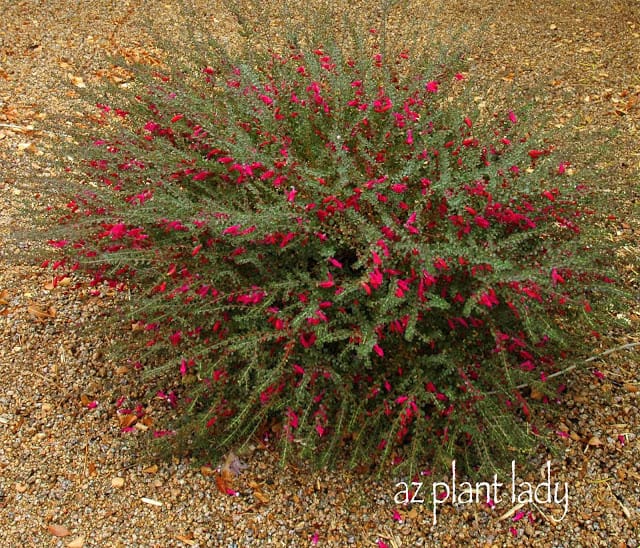
Eremophila ‘Valentine’
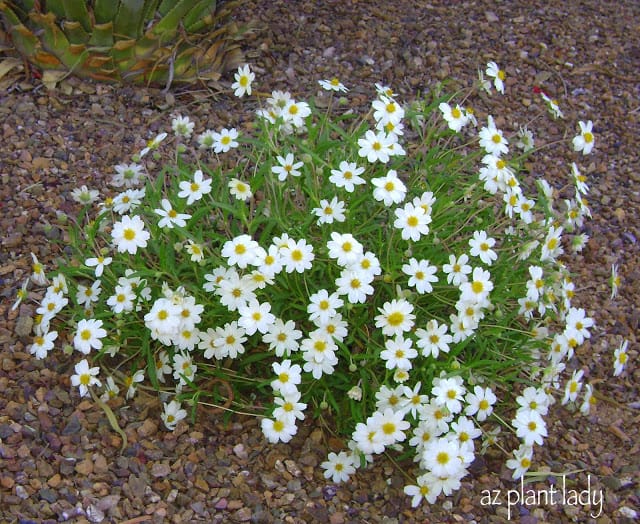
Blackfoot Daisy (Melampodium leucanthum)
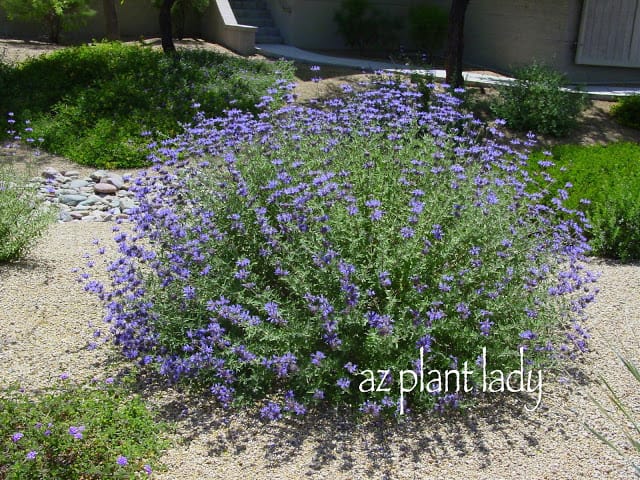
Chaparral Sage (Salvia clevelandii)

Green Cloud Texas Sage (Leucophyllum frutescens ‘Green Cloud’)
Now you may notice that the naturally rounded shrubs are not unnaturally round and smooth…..these shrubs have texture which is a good thing.
Imagine if you will, a landscape of ‘green balls’. Believe it or not, you don’t need your imagination to picture this because there are countless landscapes with this problem.
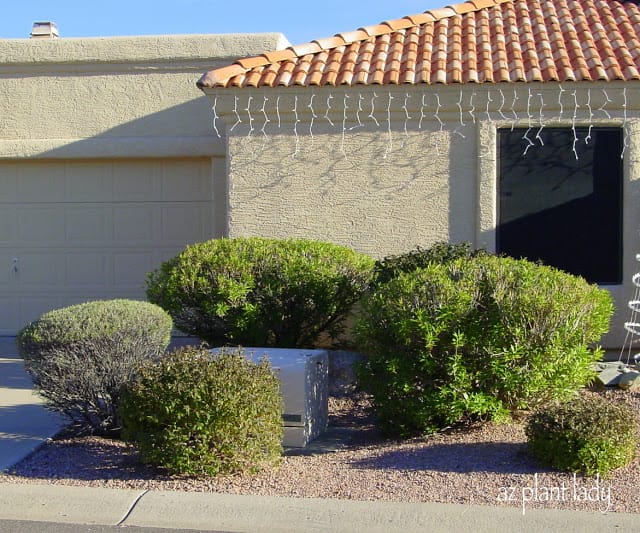

These plants have been robbed of their form. Now they are little better then green balls. There is nothing interesting about them. *For those of you who have gotten to know me through my blog or in person, you know that I am passionately against the practice of ‘poodling’ landscape shrubs. Especially those that flower. If you feel like it, you can always read my earlier post, “Shrubs Aren’t Meant to be Cupcakes.”

Besides being too crowded, the shrubs have all been overly pruned, removing much of their form and texture and creating a boring landscape.
Below is a formally pruned Texas Ebony tree….

Needless to say, they are not to be pruned into round balls.
Which do you like better….the one above or the one below? Believe it or not, they are the same type of tree.
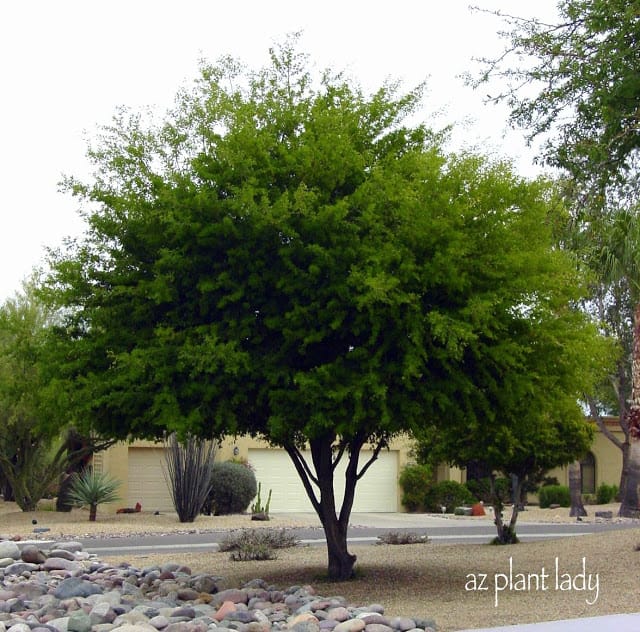
A beautiful landscape incorporates both color, form and texture…..
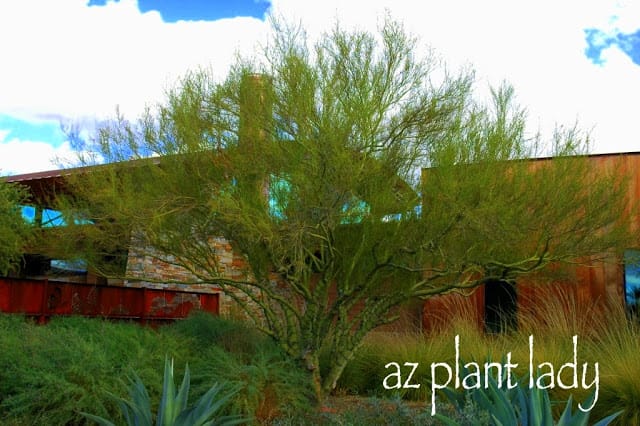
The fine texture of the Foothill Palo Verde contrasts nicely with the coarse texture of the Agave in the foreground. The ornamental grass in the background also add nice form and texture contrast.
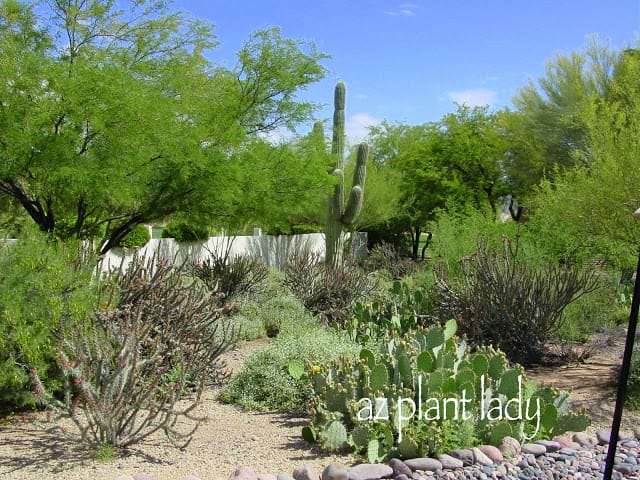
This ‘natural’ desert landscape has actually been recreated using the desert as the inspiration. The different form and textures of the succulents contrast well with the trees, shrubs and groundcovers.
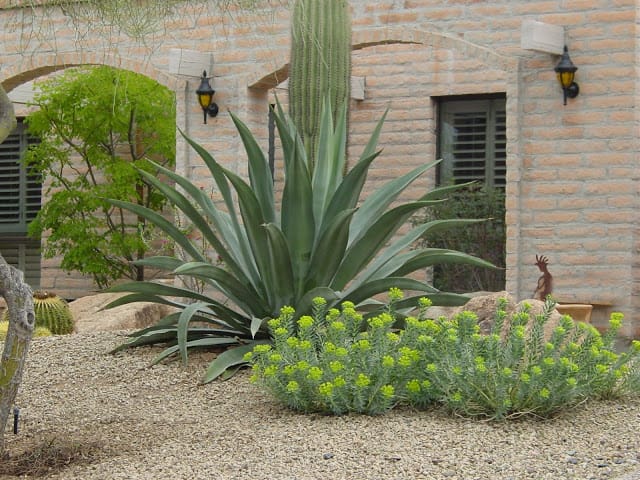
Form and texture at play with only a few different plants.
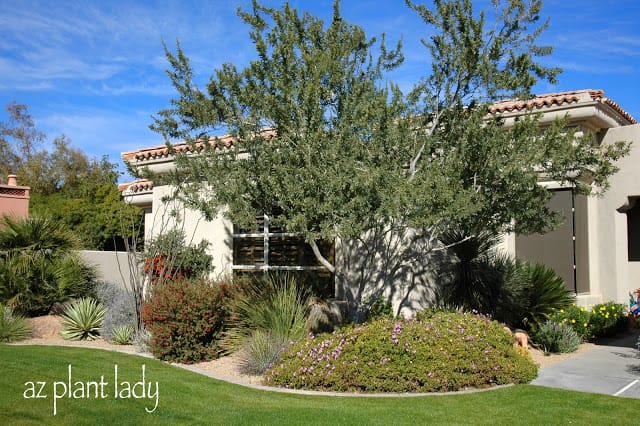
This is one of my personal favorites 🙂
I do hope this post has been helpful in explaining the importance of both texture and form in the landscape. I have only briefly touched upon it and there is much more information available online or at your local bookstore if you would like to get into more detail.
I am now off to help my husband finish building the fence of my new flower garden 🙂
Have a great weekend!








